Today, we're diving into what I believe is the next big market trend in the world of intraoral scanning. Having been in this field for nearly a decade, testing every scanner out there, and watching the market evolve, I've seen some significant shifts.
But the one that's catching my eye right now? It's all about the cloud.
Let's take a quick trip down memory lane. Back in 2019, when we released our first comprehensive IOS review (which many of you found quite helpful - thanks for kind words!), the main differentiating factor between scanners was speed.
Fast forward to today, and we're in a whole new ballgame. Basically, every intraoral scanner is now ‘fast’. So what is the next differentiating feature?
Watch our YouTube video below or continue scrolling to read more:
The Evolution of the Intraoral Scanner Market
When we look at the intraoral scanner market today, it's almost unrecognizable from where it started. Let's take a journey through the key developments that have shaped this revolutionary technology:
Early 2000s: The Pioneers
The first commercial intraoral scanners hit the market in the early 2000s. These were bulky, expensive, and required powder for scanning. They were seen as niche products, mostly used by early adopters and technology enthusiasts. The CEREC system by Sirona (now Dentsply Sirona) was one of the first to gain traction back in the Red and Blue cam days.
There was also the E4D system, which was our first CAD/CAM system at the time because we wanted to go the cheaper route in an uncharted part of dentistry. We eventually got a CEREC anyway. Lesson learned.
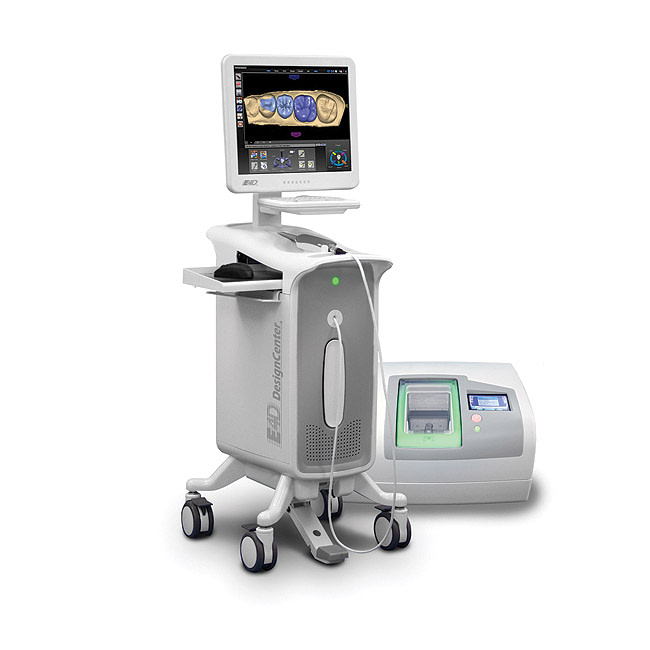
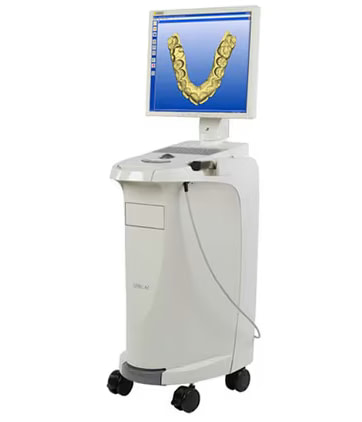
2010-2017: The Tech Race
There was a big difference between scanners during this time. CEREC was still the market leader, but it was expensive. So, other players started popping up. E4D, Planmeca, and TRIOS all started making a name for themselves in digital dentistry.
As technology improved, scanning speed became the primary focus. For the first time, we saw color scans. No powder was required for scanning, which was revolutionary.
Faster scans meant less patient discomfort and higher efficiency. This period saw some scanners, such as 3Shape and Align Technology (iTero), gain a lot of popularity.
We also saw the entry of low-cost but good-performing scanners like the Medit i500 at the time. This starkly contrasted to the previous low-cost scanners of the time, which barely worked.
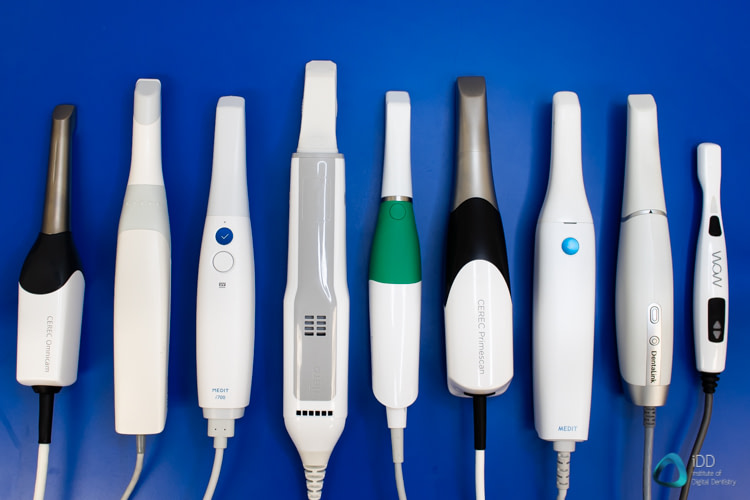
2017-2020: The Price Drop
In 2014, high-end intraoral scanners like the CEREC with Omnicam or 3Shape TRIOS Color could cost over $30,000 USD. The market has undergone a significant shift since then.
New entrants, particularly from Asia, began offering scanners at much lower price points. This increased competition drove prices down across the board. By 2020, scanners could be found for as low as $15,000 in some markets.
During this time, scan speed technology seemed to be plateauing a bit. We were seeing more and more ‘fast’ scanners.
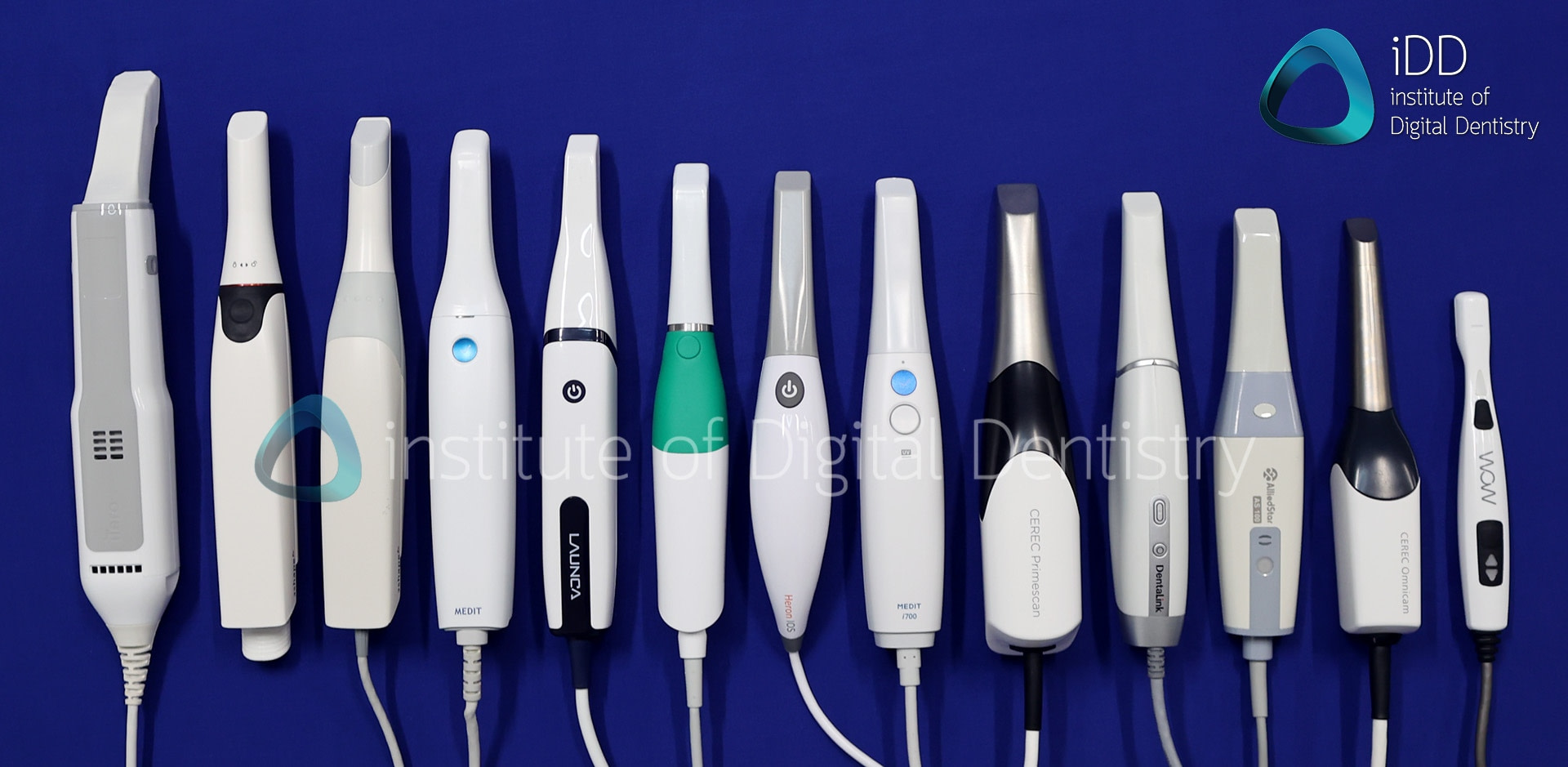
2018-2021: The Subscription Shake-up
Historically, most scanners came with yearly subscription fees. If you didn’t pay, you couldn’t scan - or at least you got locked out of many features. This was true for 3Shape scanners at the time, and it is still the case for iTero.
This model was disrupted when companies like Medit entered the market with no-subscription models. This forced established players to reconsider their pricing strategies, leading to a general move away from mandatory subscriptions. Once the norm, now most scanners come subscription-free.
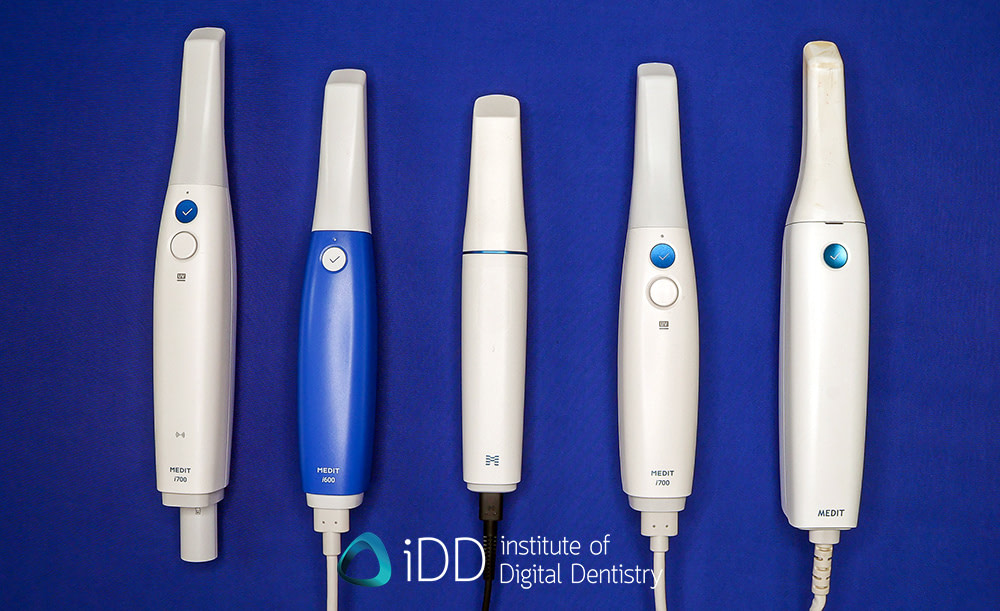
2018-Present: The Software Revolution
While hardware improvements have been significant, the real game-changer in recent years has been software. Companies have been competing to offer the most comprehensive suite of applications, from model builders and smile design to free CAD software. This shift has transformed scanners from mere input devices to comprehensive diagnostic and treatment planning tools.
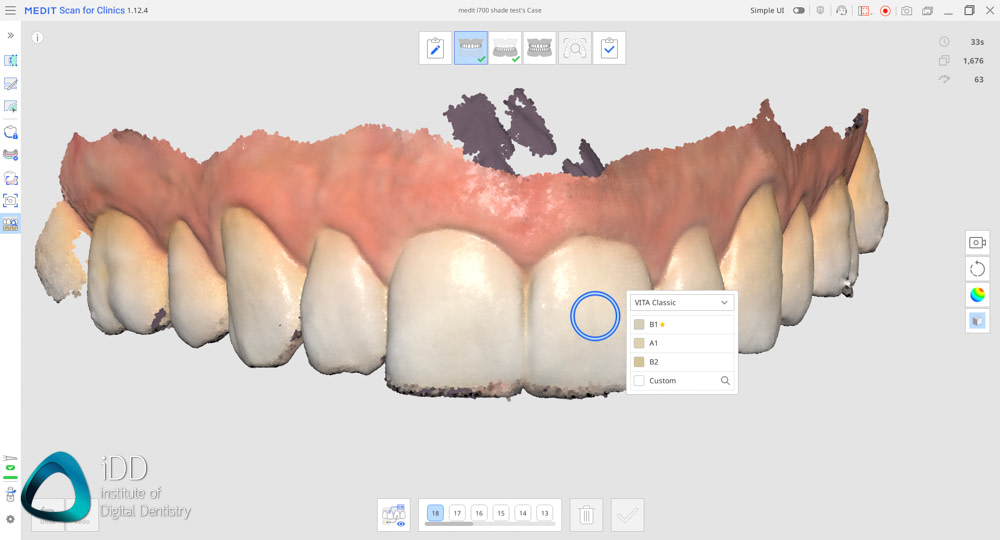
2020-Present: The Wireless Wave
The latest hardware trend has been the move towards wireless scanners. 3Shape led the charge with the TRIOS 4 Wireless, and others have followed suit.
However, it's worth noting that not all companies are fully embracing this trend. Some, like Medit with the i900 and Shining 3D with their Elite scanner, are opting for smaller, lighter wired scanners instead of going wireless. That said, I wouldn't be surprised if we see wireless versions from these companies in the future.
There are over 8 wireless scanners on the market now.
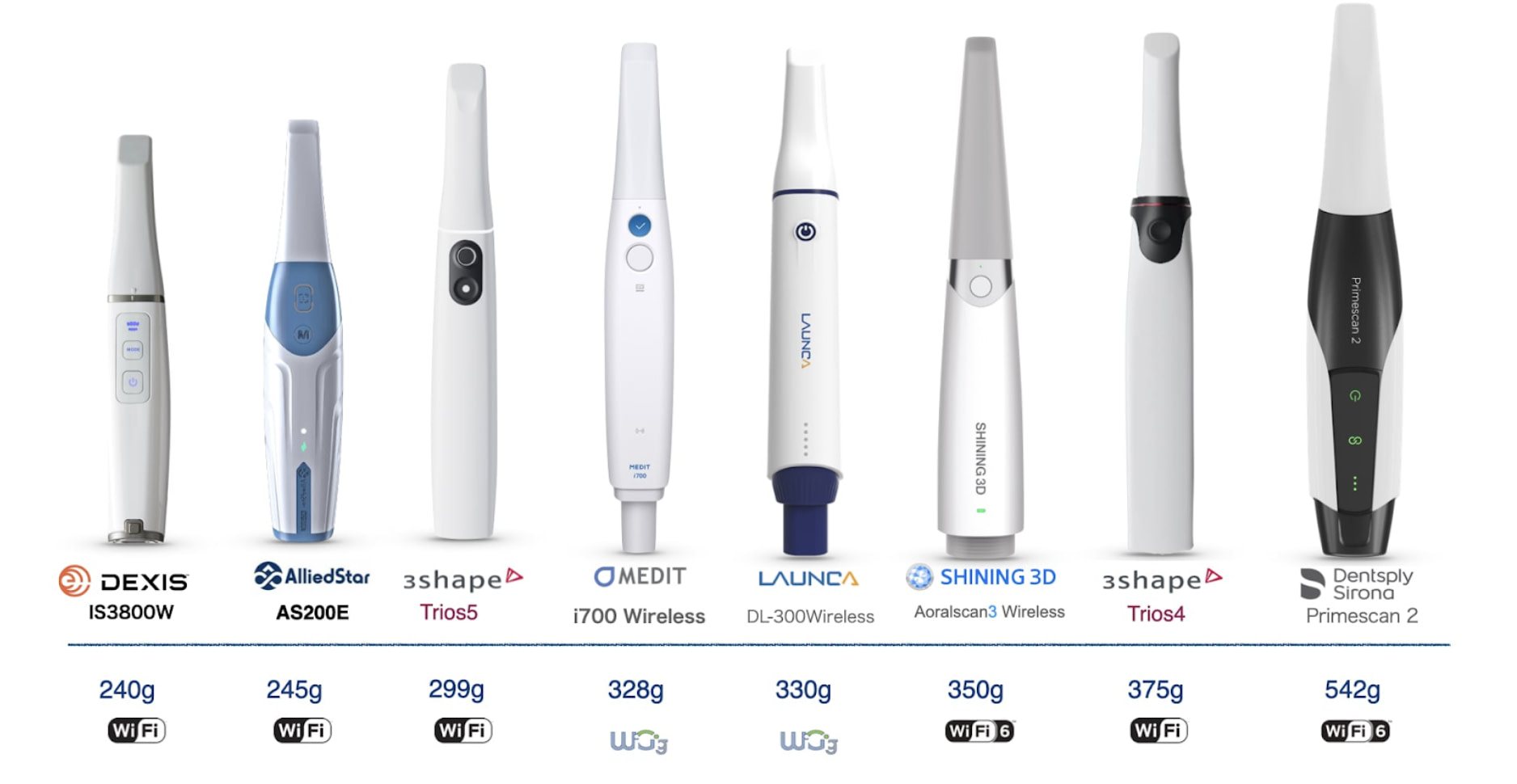
2022-Present: The Rise of AI and the Cloud
Artificial Intelligence and machine learning are beginning to play a significant role in IOS technology. These technologies are being used for everything from automated margin line detection to caries identification, further enhancing the diagnostic capabilities of these devices.
We're now seeing AI-powered diagnostics that can detect and highlight potential issues in real time during scanning and AI-assisted CAD that can automatically suggest optimal restoration designs based on millions of data points. This integration of AI extends to the cloud, as demonstrated by Primescan 2's cloud-based scanning platform and iTero's new Design Suite, which brings CAD capabilities directly to the cloud.
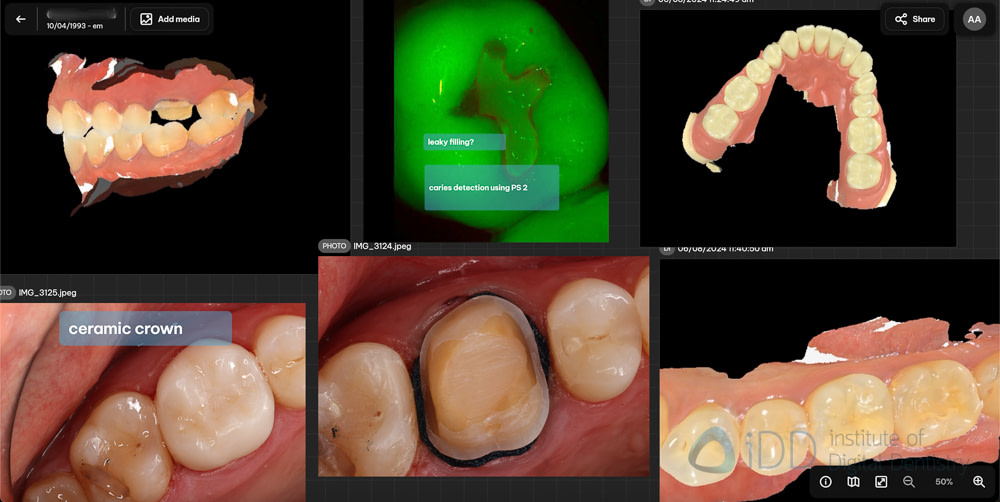
The Accuracy Plateau
It's worth noting that while early scanners struggled with accuracy, most modern scanners have reached a level of accuracy that's more than sufficient for most clinical applications. Especially the simple things like crows and bridge.
Although there is still a difference in how some scanners handle blood and edentulous scanning, there has definitely been a shift in the focus from pure accuracy to other features and integrations.
The Chinese IOS Revolution
We can't talk about the IOS market evolution without mentioning the impact of Chinese manufacturers. In 2019, many Chinese scanners simply didn't work well enough for clinical use. Fast forward to today, and we're seeing highly competitive offerings from companies like Shining 3D and Alliedstar, challenging the established players on both features and price.
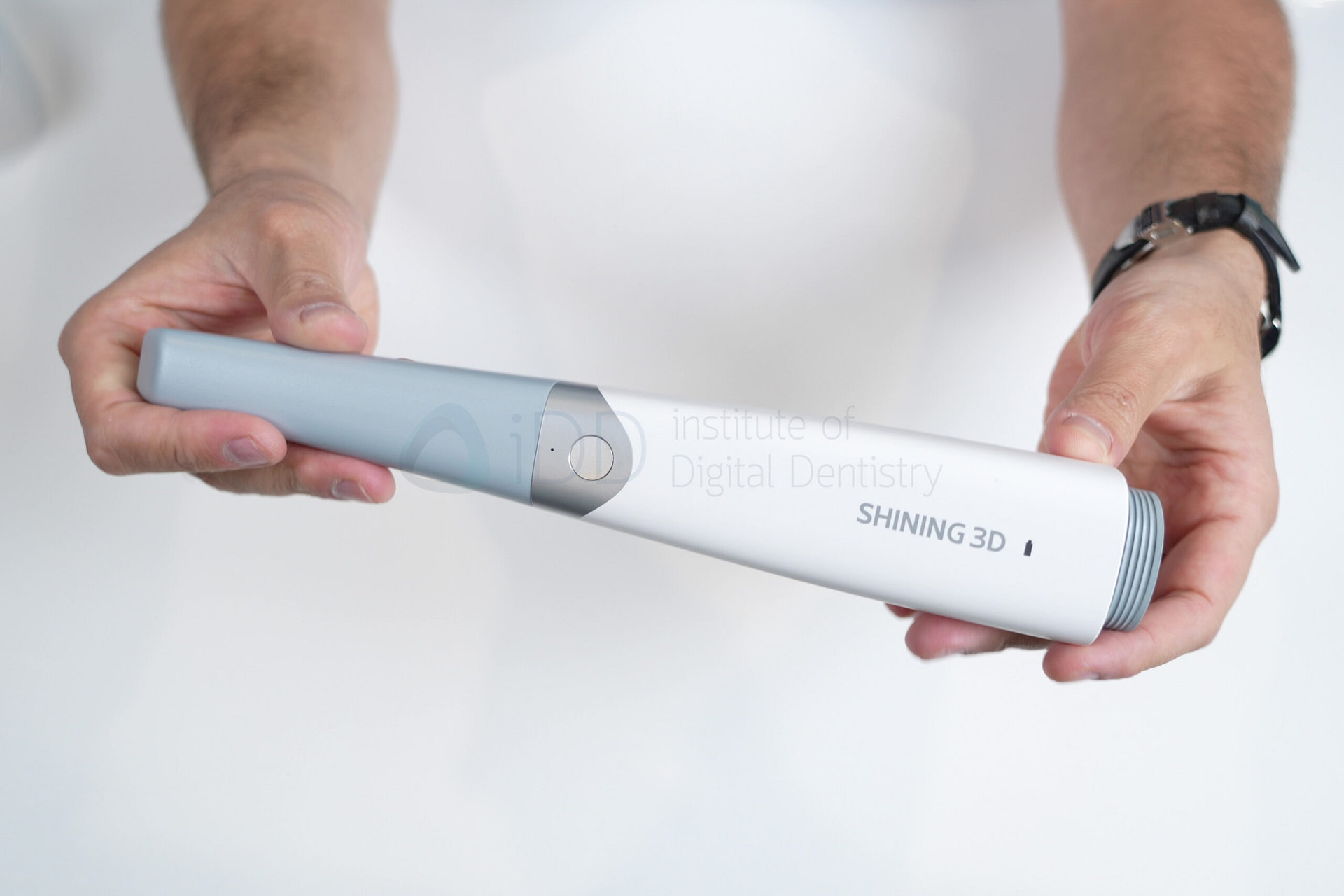
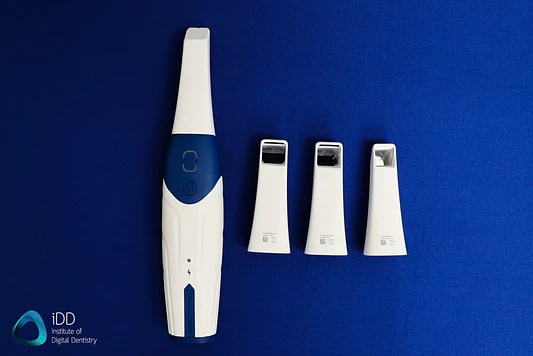
Enter the Cloud: The New Frontier in Digital Dentistry
Which brings us to the latest frontier: cloud integration.
When we conducted our comprehensive IOS review back in 2019, cloud integration was barely a blip on the radar. In fact, it was not even a feature really. No scanners even had cloud patient management features or sent scans via the cloud.
Fast-forward to today, and it's not just a feature -it's becoming the backbone of modern digital dentistry workflows. But what exactly does "cloud integration" mean in the context of intraoral scanning?
Let's break it down.
The Four Tiers of Cloud Integration in Digital Dentistry
No Cloud Integration
No cloud integration is increasingly rare in today's market. Scanners without any cloud capabilities are typically older models or very basic entry-level devices. They rely entirely on local storage and manual file transfers, which can be cumbersome and time-consuming.
In a rapidly evolving digital landscape, these systems are becoming somewhat obsolete, unable to keep pace with the demands of modern dental practices. In saying that, do areas with poor internet connections still have a place in the industry?
Basic Cloud Integration
Basic cloud integration is now the minimum standard for most modern scanners. At this level, cloud integration typically includes cloud storage for scans, the ability to share files via cloud-generated links, and basic cloud backup of patient data.
This foundational level of cloud integration offers dentists a taste of the convenience and efficiency that cloud technology can bring to their practice. It simplifies file sharing and provides a safety net for data, but still leaves much of the potential of cloud technology untapped.
Full Cloud Integration
Full cloud integration is where things start to get interesting. This level usually involves real-time syncing of patient data across devices, cloud-based patient management systems, the ability to access and manipulate scans from any device with internet access, and seamless integration with practice management software.
Medit was an early pioneer in this space, and now we're seeing major players like Dentsply Sirona with DS Core and 3Shape with Unite Cloud adopting similar approaches.
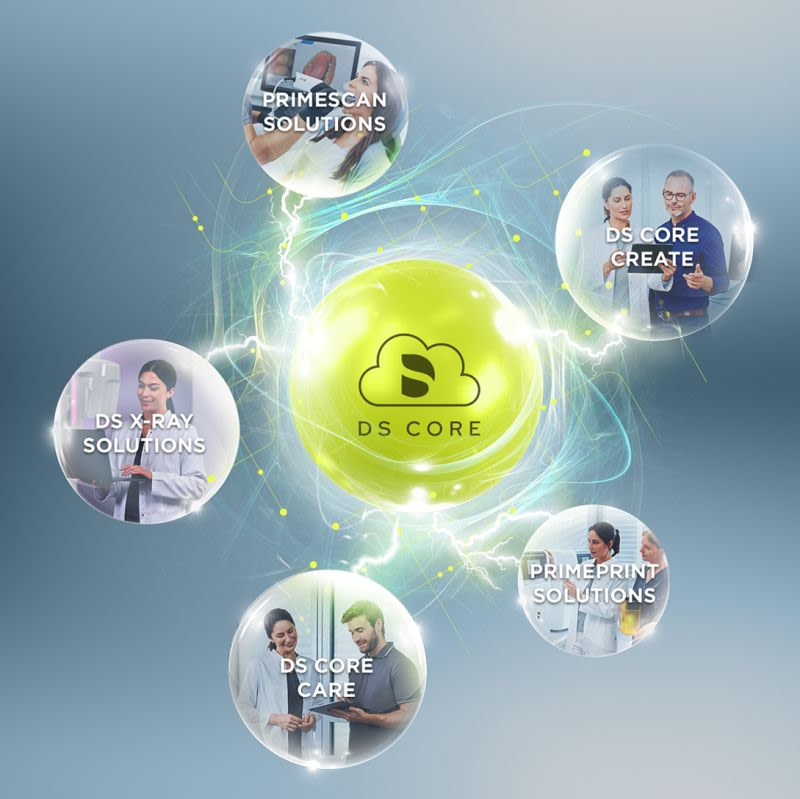
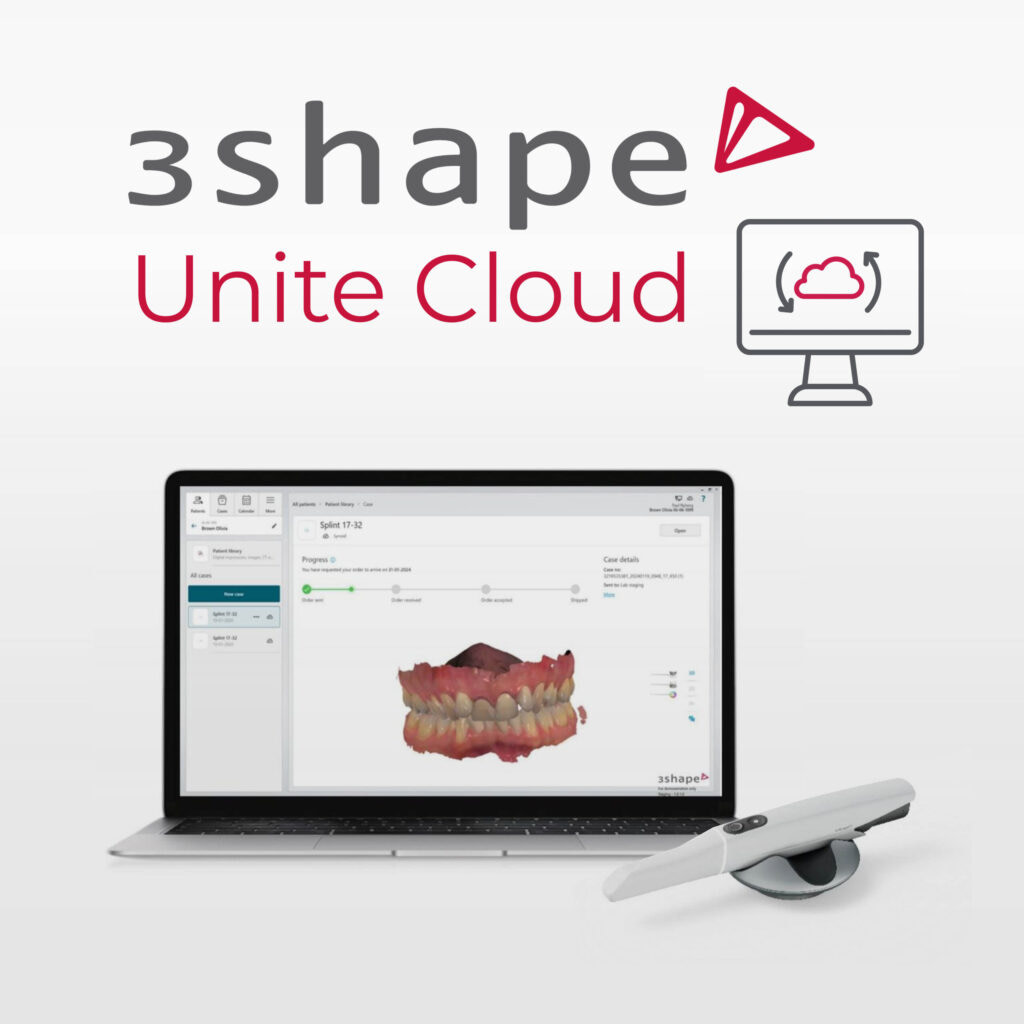
This tier of integration begins to unlock the true potential of cloud technology, offering dentists unprecedented flexibility and efficiency in managing patient data and scans.
Advanced Cloud Integration
Advanced cloud integration represents the cutting edge of cloud technology in digital dentistry. This tier includes scanning directly to the cloud in real-time, cloud-based CAD design capabilities, and AI-powered analysis and treatment planning directly in the cloud.
Two companies are currently leading the charge in this space:
Dentsply Sirona with Primescan 2
- Scans are taken, processed and stored directly in the cloud via DS Core
- The entire scanning software runs through a web browser
- This approach allows for incredible flexibility and constant updates
Align Technology with iTero Design Suite
- Brings CAD capabilities to the cloud with a streamlined version of exocad
- Allows for crown, bridge, splint, and model design directly in the cloud
- Integrates seamlessly with their existing cloud ecosystem
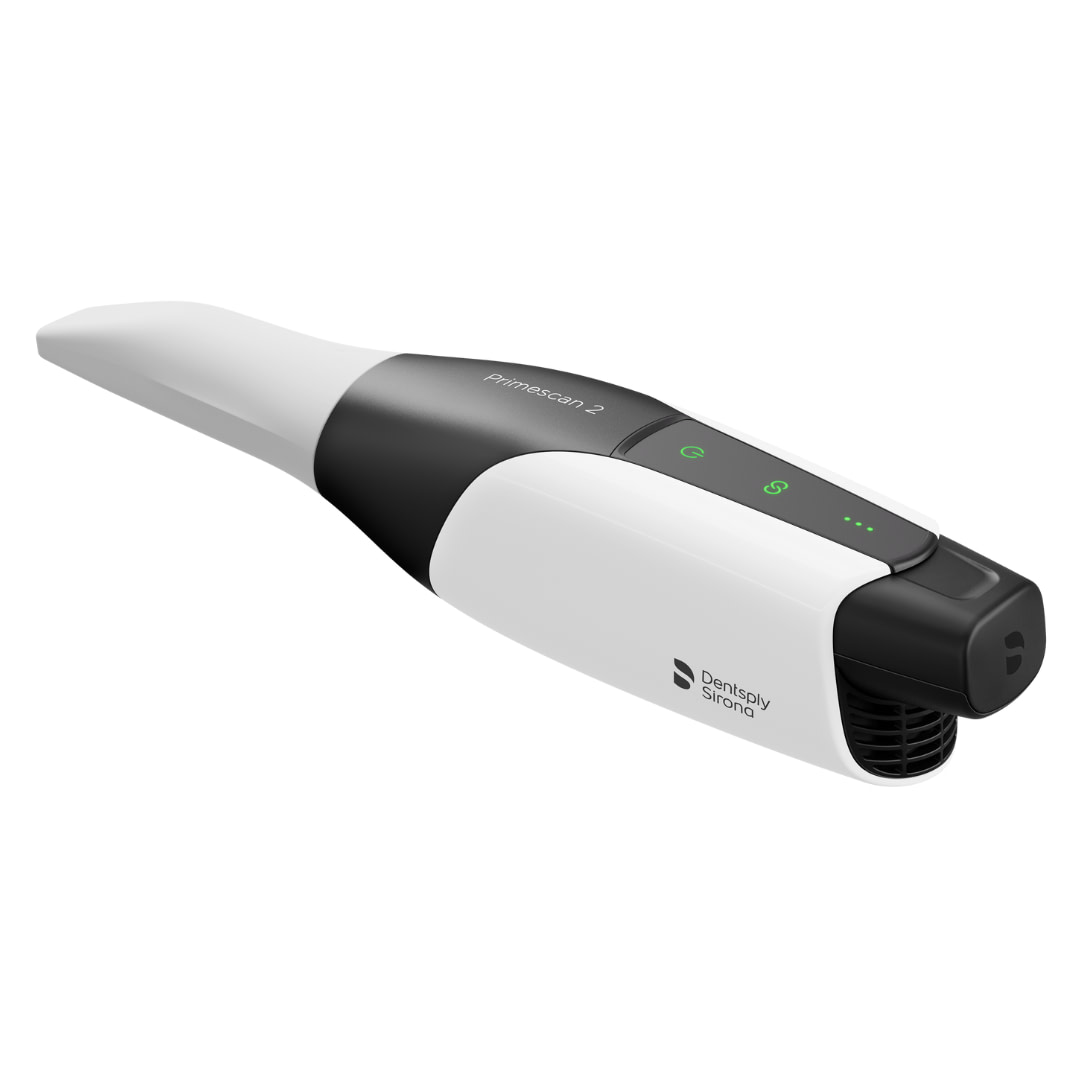
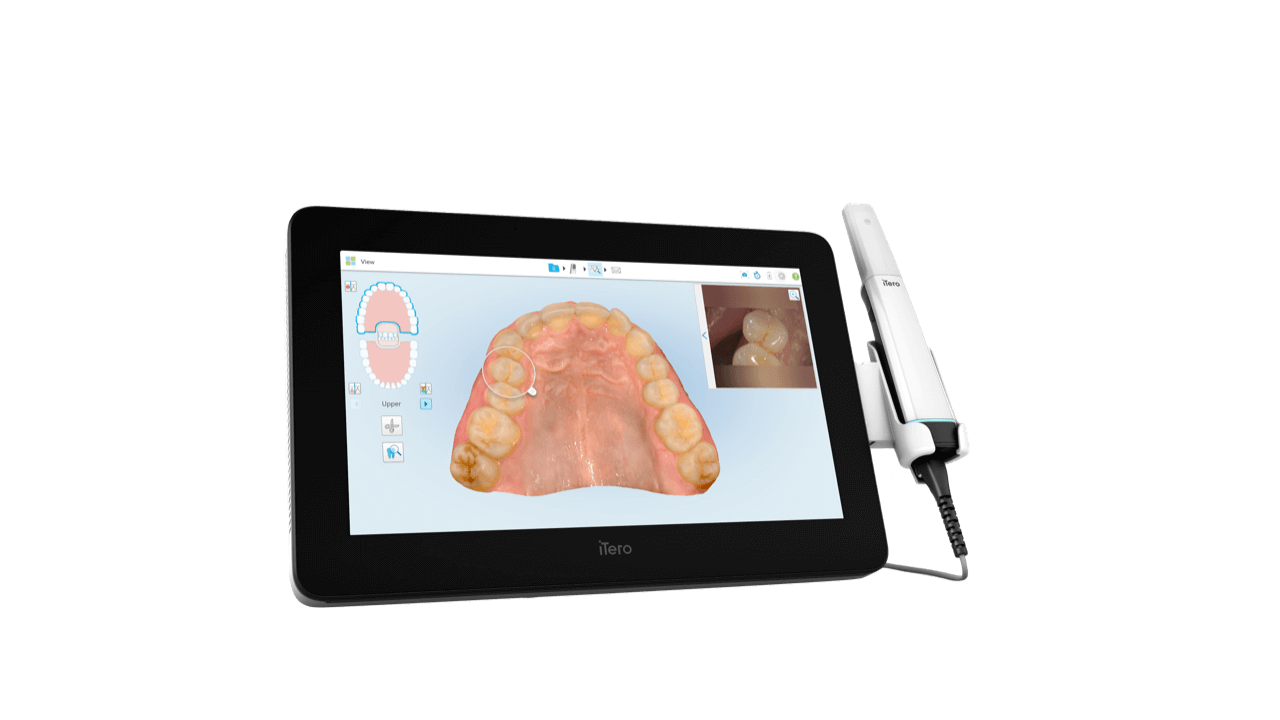
This advanced level of integration is reshaping the landscape of digital dentistry, offering unprecedented capabilities and efficiencies that were unimaginable just a few years ago.
The Implications of Advanced Cloud Integration
The move towards advanced cloud integration in digital dentistry is reshaping how dental practices operate. At its core, this shift enhances accessibility - practitioners can now access scans and designs from anywhere with an internet connection.
Or as Max Milz from Dentsply Sirona eloquently puts it - ‘Connected Dentistry’.
For multi-location practices or those frequently consulting on complex cases, this feature is particularly valuable. Here's what it could mean for your day-to-day:
- Streamlined Workflows: With everything on the cloud, you never have to worry about transferring files or being tied to a single workstation. Everything is accessible from anywhere for anyone.
- Enhanced Collaboration: Sharing cases with labs or specialists becomes a breeze. No more bulky email attachments or USB drives – just send a secure link.
- Real-time Updates: Imagine checking on your lab cases from your smartphone while sipping coffee. That's the power of cloud integration.
- Reduced IT Headaches: With cloud-based systems, updates happen automatically, and you don't need to worry about local backups or server maintenance.
- The possibilities are endless: In the future we will see more and more features go into the cloud. AI diagnostics, CAD, controlling your milling/printing machines. With all the data on the cloud, it really opens up a world of possibilities.
However, it's not all smooth sailing. You'll need to consider the following:
Technical Considerations
Before you jump straight into the cloud, here are some technical aspects to consider:
- Internet Speed: Cloud-based scanning requires a stable, high-speed internet connection. For smooth operation, it is typically recommended that you have a minimum of 50 Mbps download speed and 10 Mbps upload speed.
- Backup Solutions: What happens if your internet goes down? Look for systems that offer offline modes and auto-sync when the connection is restored.
- Compatibility: It would be good if the cloud-based scanner integrates with your existing practice management software. Some systems offer APIs for seamless integration, while others might require workarounds.
- Data Security: Look for scanners that offer end-to-end encryption and comply with data protection regulations like HIPAA.
Economic Analysis
Let's talk numbers. The shift to cloud-based systems can impact your bottom line in several ways:
- Initial Costs: While the upfront cost of cloud-based scanners might be lower, factor in potential monthly subscription fees for cloud services.
- ROI Calculation: Consider time saved on file management, reduced need for local storage, and potential increases in case acceptance rates when calculating ROI.
- Scalability: Cloud systems can easily grow with your practice without significant additional investment in hardware.
- Hidden Costs: Be aware of potential costs for staff training, internet upgrades, or necessary software integrations.
Interestingly, the move to advanced cloud integration might bring back a form of the subscription fees that the market had moved away from.
It's interesting to note how the market has come full circle. We've gone from yearly scanner fees (which users hated) to no fees, and now we're potentially heading back to monthly fees for cloud services. It'll be fascinating to see how users respond to this.
The key question is: will the benefits of cloud integration outweigh these costs for dental practices?
As with any technological advancement, it comes with both opportunities and considerations for dental professionals to navigate.
Patient Perspective
Your patients might not care about the nitty-gritty of cloud technology, but they may notice the benefits:
- Faster Treatment: Cloud-based workflows can speed up the time from scan to final restoration.
- WOW Factor: there is no doubt in my mind that patients are incredibly impressed by this technology. This leads to more referrals.
- Improved Communication: Use cloud-based models to better explain treatment plans to patients.
- Convenience: Patients can view their 3D scans or treatment plans from home through secure portals.
- Data Access: Patients may appreciate the ability to access their dental records easily if they move or change dentists.
However, be prepared to address patient concerns about data security and privacy. Having clear policies and being able to explain your security measures will help build trust.
Environmental Impact
Believe it or not, going cloud can also mean going green:
- Reduced Physical Storage: Less need for model storage means less space needed and fewer resources used in constructing and maintaining that space.
- Paper Reduction: Digital workflows significantly reduce the need for printed charts, referral slips, and lab prescriptions.
- Energy Efficiency: Cloud data centers are often more energy-efficient than local servers in dental offices.
- Less Travel: With better remote collaboration, there's less need for in-person meetings or courier services for physical models.
- Durability: Digital files don't degrade over time like physical models, reducing the need for remakes and the associated material waste.
Looking Ahead
As we move forward, I believe we'll see more IOS companies pushing the boundaries of what's possible with cloud integration. We might see advancements like:
- Real-time collaboration on case designs
- Integration of cloud-based AI for automated diagnostics and treatment planning
- Seamless integration with other cloud-based dental technologies (practice management, billing, etc.)
The cloud is no longer just a feature of intraoral scanners – it's becoming the ecosystem in which digital dentistry operates. As this trend continues to evolve, it promises to make digital workflows more efficient, collaborative, and accessible than ever before.
In essence, advanced cloud integration represents a significant evolution in digital dentistry. It can enhance efficiency, collaboration, and accessibility in dental practices, opening up new possibilities for patient care and practice management.
This evolution has transformed intraoral scanners from expensive, niche devices to essential tools in modern dentistry. They've become faster, more accurate, more affordable, and infinitely more capable. As we look to the future, it's clear that the next battleground isn't just hardware – it's software, integration, and leveraging the power of the cloud and AI to create comprehensive digital workflows.
The journey of IOS technology is a testament to the rapid pace of innovation in digital dentistry.
It's exciting to think about where we might be in another five or ten years!
Conclusion
This shift to the cloud is huge, folks. It means accessing your scans from anywhere, syncing across multiple clinic sites, and potentially streamlining your entire workflow. But it's not without challenges. Internet connectivity and speed become crucial factors, and we might see a return of monthly fees to cover cloud storage costs.
So, what's next?
I believe we're going to see more companies diving deep into cloud integration, moving beyond just patient management. It's an exciting time in digital dentistry, and I'm curious to see how it all unfolds.
What are your thoughts on this cloud revolution? Are you excited about the possibilities, or do you have concerns? How do you feel about the potential return of monthly fees for cloud services?
Drop a comment below and let's discuss!
Remember, at iDD, we're always here to keep you updated on the latest in digital dentistry. Stay tuned for more insights and reviews!

